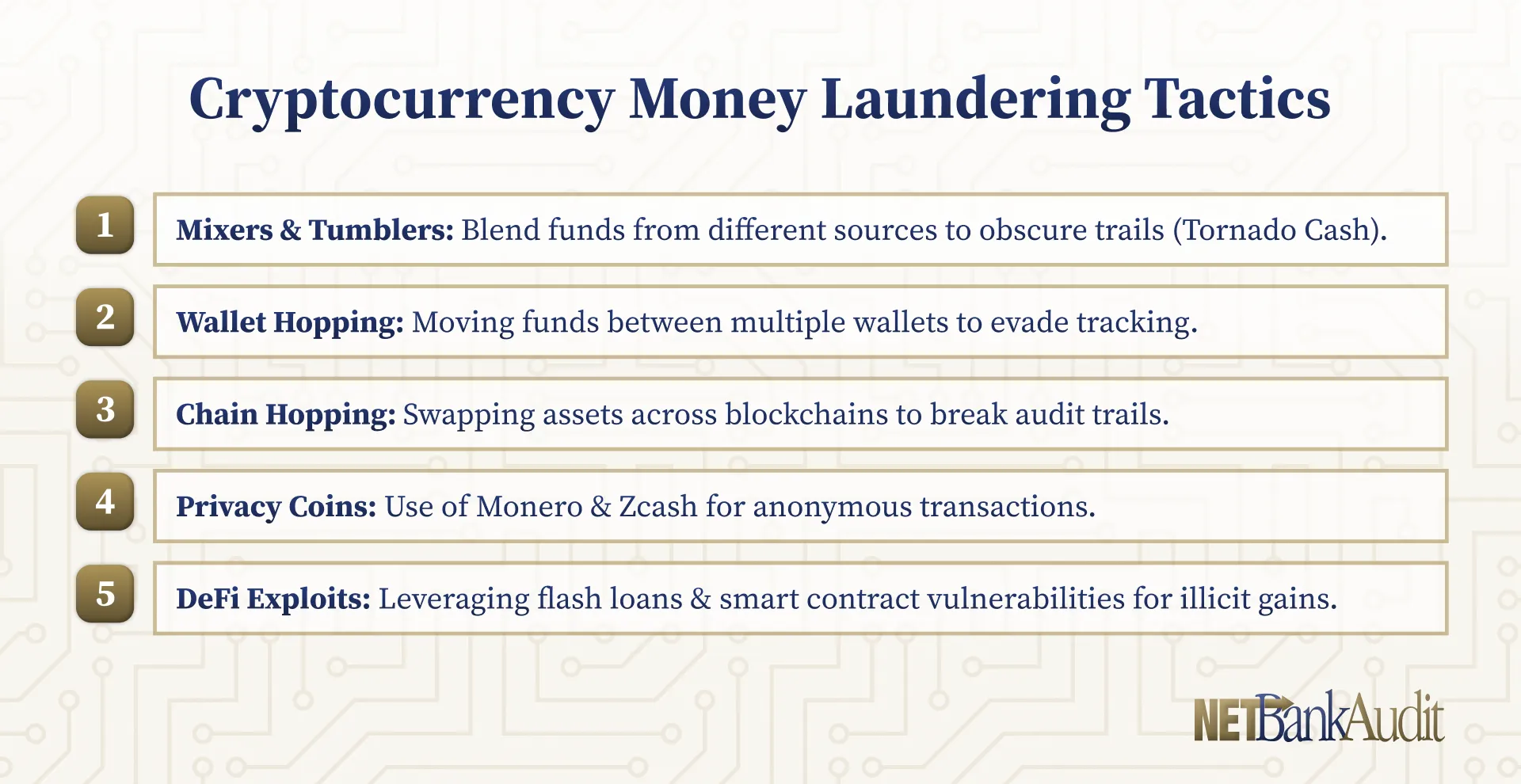In the relentless fight against financial crimes, structuring and smurfing represent sophisticated tactics employed by criminals to evade detection and integrate illicit funds into the legitimate economy. For financial institutions, understanding these techniques is paramount to developing effective detection and prevention strategies. This guide delves into the definitions, methods, legal implications, real-world examples, and best practices associated with structuring and smurfing, providing actionable insights to bolster compliance programs.
To learn more, visit our full guide on BSA, AML, CFT, and OFAC regulations for financial services.
Understanding Structuring and Smurfing: A Threat to Financial Integrity
Money laundering is the covert process of transforming proceeds from criminal activities into legitimate assets. Structuring and smurfing are two prominent methods used by launderers to obscure the origins of illicit funds and evade regulatory scrutiny. While these techniques have existed for decades, the rapid advancement of financial technology has created new opportunities for criminals to exploit and enhanced their ability to avoid detection.
The digital transformation of banking has fundamentally changed how money launderers operate. Mobile banking apps, digital wallets, cryptocurrencies and instant payment systems allow criminals to execute complex structuring schemes with unprecedented speed and precision. What once required physical visits to multiple bank branches can now be accomplished through a network of smartphones, with transactions coordinated across dozens of accounts in mere minutes.
What Are Structuring and Smurfing in Money Laundering?
What is Structuring?
Structuring refers to the deliberate division of large financial transactions into smaller, inconspicuous amounts to evade mandatory reporting thresholds set by regulatory authorities. Under the Bank Secrecy Act (BSA), financial institutions are required to file Currency Transaction Reports (CTRs) for any single transaction or a series of related transactions exceeding $10,000 in a single day. Structuring, therefore, involves strategically manipulating transaction sizes to avoid triggering these reports.
What is Smurfing?
Smurfing is a subset of structuring that involves multiple individuals, often referred to as "smurfs," who deposit or withdraw funds on behalf of a primary entity. This method disperses the total amount across numerous transactions and accounts, making it significantly harder for financial institutions to detect the underlying money laundering activities. Unlike structuring, which can be carried out by a single individual, smurfing typically involves a network of individuals working in concert to facilitate the laundering process.
Structuring in Money Laundering: Methods, Risks, and Detection

Structuring Techniques: Common Methods Criminals Use
Criminals employ various methods to achieve structuring, each designed to obscure the transaction trail and evade detection:
- Multiple Deposits Below the $10,000 Threshold
- Description: Depositing amounts just under $10,000 across multiple accounts or branches to stay below the reporting limit.
- Impact: Makes it challenging for financial institutions to correlate deposits and identify the cumulative illicit amount.
- Conducting Transactions at Different Bank Branches
- Description: Using multiple branches to deposit funds, reducing the likelihood of large sums being aggregated and flagged.
- Impact: Disperses the risk across various locations, complicating the detection of suspicious activity.
- Using Different Accounts or Monetary Instruments
- Description: Fragmenting funds through various accounts or instruments like cashier’s checks and money orders.
- Impact: Creates multiple transaction trails, making it harder to trace the flow of illicit funds.
Structuring Regulations: Legal Framework and Prohibited Actions
The BSA outlines specific prohibitions and penalties related to structuring, aiming to deter financial institutions from facilitating money laundering activities. Structuring is punishable even if transactions are spread across different banks or multiple days, as long as the intent to evade reporting is evident.
Key Prohibited Actions:
- Causing Financial Institutions to Fail to File a CTR: Legal consequences for institutions that ignore or avoid required reporting.
- Filing CTRs with Omissions or Misstatements: Strict penalties for inaccurate or incomplete reporting of transactions.
- Structuring Transactions: Criminalizing the act of structuring itself, including any assistance provided to launderers.
Structuring Penalties: Fines, Imprisonment, and Forfeitures

Violations of structuring regulations carry severe penalties under 31 U.S.C. § 5324, enforced by agencies such as FinCEN and federal prosecutors:
- Criminal Penalties
- Fines: Up to $250,000 for each instance of structuring.
- Imprisonment:
- Up to 5 years for each offense.
- Up to 10 years if connected to additional crimes such as money laundering or drug trafficking.
- Civil Penalties
- Forfeiture: Seizure and forfeiture of funds involved in structuring activities, regardless of their legitimate origin.
- Additional Fines: Imposing fines equivalent to the amount structured, doubling the financial consequences for offenders.
- Repeat Violator Penalties
- Enhanced Sentencing: Courts may impose longer prison terms for repeat offenders, especially those involved in serious crimes.
- Extended Asset Seizure: Broad asset forfeiture including properties and accounts indirectly linked to structured funds.
Smurfing in Money Laundering: Techniques and Tactics Uncovered
While structuring can be done by a single person breaking up their own transactions, smurfing adds complexity by using multiple people across different locations and accounts. Think of structuring as a solo performance versus smurfing as an orchestrated ensemble - both try to avoid detection, but smurfing involves coordinated movements by multiple players.

Smurfing operations often employ more sophisticated techniques compared to basic structuring:
- Using sequentially numbered accounts to track multiple deposits
- Coordinating deposit timing across different branches and institutions
- Converting funds between different instruments like cashier's checks, prepaid cards, and cryptocurrencies
- Employing front businesses to create seemingly legitimate transaction patterns
Financial institutions must employ sophisticated monitoring systems to detect coordinated smurfing activities, including tracking related accounts' transaction timing, geographic patterns, shared customer identifiers, and transaction velocities across account networks. This challenge has intensified as modern smurfers increasingly exploit digital technologies, using payment apps and digital wallets for rapid fund movement, privacy-focused cryptocurrencies to obscure trails, multi-jurisdictional transfers, and automated systems to coordinate timing.
Advanced Smurfing Techniques in Modern Financial Systems
Smurfing has evolved beyond traditional banking methods to exploit diverse financial instruments and technologies. Modern smurfers employ sophisticated techniques across multiple channels to fragment and obscure illicit fund movements.

Branch and ATM Networks
Smurfs coordinate their activities across wide geographic networks of bank branches and ATMs. By strategically timing small deposits at numerous locations, they create a dispersed transaction pattern that challenges traditional monitoring systems. This distributed approach significantly complicates the identification of connected activities, as transactions appear random when viewed in isolation.
Digital Payment Systems
The rise of prepaid cards and digital wallets has provided smurfers with powerful tools for fund movement. These instruments allow rapid loading and transfer of funds while offering a degree of anonymity. Smurfs can quickly convert cash into digital value, then move it through multiple wallets or cards, creating complex layering patterns that obscure the money's origin. The speed and convenience of these systems make them particularly attractive for large-scale smurfing operations.
Third-Party Payment Networks
To further distance themselves from illicit funds, smurfers increasingly utilize third-party payment mechanisms. By recruiting individuals to issue checks or initiate payments, they create additional layers of separation between the source funds and their ultimate destination. This intermediary approach makes it exceptionally difficult for financial institutions to establish direct links to the primary money launderers.
Cryptocurrency Integration

Perhaps the most sophisticated evolution in smurfing involves privacy-focused cryptocurrencies like Monero. These digital assets provide enhanced anonymity features that can effectively mask transaction paths. Smurfers convert funds through multiple cryptocurrency exchanges and privacy coins, exploiting their technological features to create nearly untraceable fund movements. This integration of cryptocurrency significantly increases the complexity of tracking and attribution efforts.
%201%20(1).svg)
%201.svg)
THE GOLD STANDARD INCybersecurity and Regulatory Compliance
Structuring and Smurfing Red Flags: Warning Signs Financial Institutions Should Know
Financial institutions must be vigilant in identifying indicators of structuring and smurfing to prevent involvement in money laundering schemes. Recognizing these red flags enables timely intervention and effective mitigation of risks.
Transaction Patterns That Indicate Structuring or Smurfing
In the complex world of financial crime detection, certain transaction patterns emerge as reliable indicators of structuring and smurfing activities. These patterns, while sometimes subtle, often reveal themselves through careful analysis of transaction data across time, location, and account relationships. Key indicators include:
- Repeated Deposits Just Below $10,000 Thresholds: Frequent deposits of amounts slightly below $10,000 can indicate an attempt to evade CTRs, signaling potential structuring.
- Transactions Conducted at Multiple Branches or Institutions: Depositing funds across various branches or institutions within a short timeframe suggests deliberate fragmentation of transactions to avoid detection.
- Multiple Transactions Appearing Coordinated: Series of transactions that seem to follow a pattern or appear synchronized across different accounts or locations may indicate organized smurfing efforts.
- Consecutive Account Numbers for Cash Deposits: Use of sequentially numbered accounts to make deposits can be a tactic to streamline smurfing operations, making it easier to manage multiple transactions.
- Large Total Amounts When Aggregated Over Time: While individual transactions remain below reporting thresholds, the cumulative total can represent a significant illicit amount, warranting further investigation.
Customer Behaviors That Suggest Structuring or Smurfing
Beyond transaction patterns, the behavior and interactions of customers themselves often provide crucial clues to potential structuring and smurfing activities. Money launderers frequently exhibit distinctive behavioral patterns when engaging with financial institutions, whether through their interactions with staff, their approach to documentation requirements, or their account management practices. Notable behavioral red flags include:
- Reluctance to Provide Additional Documentation: Customers who are hesitant or refuse to supply source-of-funds information may be attempting to conceal the origins of their deposits.
- Excessive Interest in Regulatory Reporting Requirements: Individuals showing an unusual focus on the specifics of reporting thresholds or regulatory obligations could be signaling awareness of their illicit activities.
- Use of Multiple Accounts with Minimal Activity: Opening numerous accounts with little prior transaction history and then using them for similar transaction types is a common indicator of smurfing.
- Inconsistent Transactions with Known Income or Business Activity: Transactions that do not align with a customer's declared income or business operations suggest the possibility of illicit fund movement.
High-Risk Patterns for Structuring and Smurfing Across Locations
Geographic and operational patterns play a crucial role in identifying potential structuring and smurfing activities. Money launderers often exploit jurisdictional differences and geographic dispersion to complicate detection efforts. Understanding these location-based risk factors is essential for financial institutions, as certain geographic patterns and cross-border activities can signal increased money laundering risk. Geographic patterns to look for:
- Transfers Involving High-Risk Jurisdictions: Transfers to or from countries known for weak AML enforcement or secrecy laws increase the risk of money laundering and warrant additional scrutiny.
- Transactions Conducted at Geographically Dispersed Branches: Conducting deposits or withdrawals at branches located far apart may indicate an intentional strategy to evade centralized oversight.
- Frequent Small-Value International Transfers: Multiple small transfers across international borders without a clear legitimate business purpose can be indicative of smurfing activities.
Payment Methods That Facilitate Structuring and Smurfing
The evolution of payment technologies has created new opportunities for money launderers to structure and disguise illicit funds. From traditional instruments like cashier's checks to modern digital payment systems and cryptocurrencies, criminals continuously adapt their methods to exploit various payment channels. Financial institutions must look for:
- Use of Sequentially Numbered Cashier’s Checks or Money Orders: Issuing checks or money orders in a sequential manner and in amounts just below reporting thresholds is a common tactic to mask large illicit sums.
- Utilization of Digital Wallets and Exchanges: Dividing funds into smaller transactions through digital wallets or cryptocurrency exchanges complicates the tracking process and enhances anonymity.
- Conversion to Privacy-Focused Cryptocurrencies: Employing cryptocurrencies like Monero, known for their privacy features, allows launderers to obscure the origin and destination of funds more effectively.
- Loading Prepaid Cards with Small Amounts Across Multiple Users: Distributing funds across multiple prepaid cards, each loaded with amounts below reporting limits, disperses the financial activity and reduces the likelihood of detection.
Case Studies of Structuring and Smurfing in Financial Crime
Understanding real-world instances of structuring and smurfing provides valuable insights into how these techniques are executed and the severe consequences faced by institutions and individuals involved.
High-Profile Cases: Structuring and Smurfing Penalties for Banks
.webp)
- TD Bank's $3 Billion Settlement (2024)
In October 2024, TD Bank agreed to a historic $3 billion settlement with the U.S. Department of Justice. The bank pleaded guilty to conspiracy to commit money laundering, marking the largest such plea by a bank in U.S. history. Lax anti-money laundering practices allowed multiple networks to move approximately $670 million through the bank, facilitating various illegal activities, including drug and human trafficking.
- Citigroup's Involvement in Structuring Activities (2024)
In July 2024, U.S. law enforcement officials identified Citigroup as a preferred institution for money laundering by drug traffickers. Criminals exploited the bank's less robust fraud controls to make multiple small deposits, a classic structuring technique, to avoid detection. This case is ongoing, highlighting the persistent risks even among major financial institutions.
- HSBC's $1.9 Billion Penalty (2012)
HSBC was fined $1.9 billion for allowing drug cartels to launder at least $881 million through its U.S. operations. The bank's oversight failures enabled structured deposits and wire transfers that facilitated money laundering activities, drawing attention to the critical need for robust AML controls.
- Wachovia Bank's $160 Million Settlement (2010)
Wachovia Bank faced charges for failing to monitor over $373 billion in wire transfers from Mexican currency exchange houses, a portion of which was linked to drug cartels. The bank's inadequate anti-money laundering controls allowed structured transactions to go undetected, resulting in a $160 million settlement in fines and forfeitures.
Other Structuring and Smurfing Cases
- Five Individuals Plead Guilty in Multimillion-Dollar Structuring Scheme (2024)
In May 2024, five individuals admitted to conspiring to launder proceeds from computer fraud by structuring transactions to avoid detection. They established fake businesses in Florida, opened bank accounts, and made numerous small deposits below the $10,000 reporting threshold. This scheme successfully laundered over $3.3 million to offshore accounts in China, demonstrating the effectiveness of coordinated smurfing efforts.
- Operation Destabilise (2023-2024)
Led by the UK's National Crime Agency, Operation Destabilise dismantled two multi-billion-pound money laundering networks run by Russians Ekaterina Zhdanova and Georgy Rossi. These networks facilitated money laundering for British criminal gangs, Russian oligarchs, and cyber fraudsters, often using smurfing techniques involving cryptocurrency transactions. The operation resulted in 84 arrests in the UK and significant seizures of cash and cryptocurrency.
- Melbourne Syndicate's $63 Million Operation (2021)
In Australia, Boliang Liu and Tao Zhou were sentenced for their roles in laundering $63 million over a year. The syndicate moved approximately $2 million weekly through smurfing techniques, depositing small amounts across various accounts to avoid detection. Their operation was dismantled in 2021 following an undercover investigation, underscoring the global nature of smurfing activities.
- Operation Casablanca (1998)
One of the largest U.S. investigations into money laundering, Operation Casablanca targeted Mexican banks and drug cartels. The operation uncovered extensive smurfing activities used to launder drug money through U.S. financial institutions. It led to over 160 arrests and the seizure of $100 million, highlighting the substantial impact of coordinated law enforcement efforts.
- Operation Greenback (1980s)
The IRS-led initiative, Operation Greenback, targeted money laundering by the Medellín Cartel. Agents uncovered extensive smurfing operations, where large sums of drug money were divided into smaller deposits to evade detection. The operation led to significant arrests and influenced U.S. legislation to criminalize money laundering, reinforcing the importance of robust AML frameworks.
Best Practices to Combat Structuring and Smurfing in Financial Institutions
To effectively combat structuring and smurfing, financial institutions must implement comprehensive and proactive measures. Adopting best practices ensures that compliance programs are robust, adaptable, and capable of addressing the evolving tactics used by money launderers.
AI-Powered Transaction Monitoring Systems: Detecting Structuring and Smurfing
Leveraging cutting-edge technology is essential for identifying and flagging suspicious transaction patterns indicative of structuring and smurfing:
- AI-Driven Automated Alerts: Employing artificial intelligence (AI) and machine learning algorithms enhances the ability to detect complex patterns associated with structuring and smurfing. These systems can analyze vast amounts of data in real-time, identifying anomalies that may signify illicit activities and generating automated alerts for further investigation.
- Cumulative Transaction Tracking: Implementing systems that aggregate customer transactions across multiple accounts, branches, and timeframes enables institutions to identify structuring attempts. By tracking cumulative deposits, financial institutions can recognize patterns that single transactions alone might miss, providing a holistic view of customer activity.
Enhanced Due Diligence: Mitigating High-Risk Transactions
.webp)
Strengthening due diligence processes is crucial for identifying high-risk customers and transactions that may involve structuring or smurfing:
- Risk-Based Know Your Customer (KYC) Procedures: Conduct thorough Know Your Customer (KYC) procedures tailored to assess the risk levels of different customers. This involves verifying identities, understanding the nature of business activities, and evaluating the geographic locations associated with customers to identify potential vulnerabilities.
- Continuous Monitoring: Implementing continuous monitoring systems ensures that customer accounts and transactions are regularly reviewed for signs of suspicious activity. This ongoing vigilance allows for the timely detection and mitigation of money laundering attempts, maintaining the integrity of the financial institution.
- Identify High-Risk Accounts: Apply heightened scrutiny to accounts deemed high-risk, including those associated with politically exposed persons (PEPs), customers from high-risk jurisdictions, and entities involved in high-risk industries. Detailed investigations into the origin of funds and the nature of transactions are essential for mitigating risks.
AML Training for Employees: Building Awareness Against Structuring
Educating employees is a fundamental component of an effective AML program. Comprehensive training ensures that staff members are equipped to recognize and respond to structuring and smurfing activities:
- Comprehensive AML Education: Provide regular training sessions covering the latest AML regulations, structuring and smurfing techniques, and best practices for detection and reporting. Training should be tailored to different roles within the organization, ensuring that all employees understand their specific responsibilities.
- Real-Life Case Studies: Utilize recent examples of structuring and smurfing cases to enhance understanding and detection capabilities. Analyzing real-world scenarios helps employees recognize similar patterns in their daily operations, improving their ability to identify suspicious activities effectively.
Collaboration and Suspicious Activity Reporting (SAR)
Fostering collaboration and ensuring timely reporting are critical for combating structuring and smurfing on a broader scale:
- Inter-Institutional Cooperation
Share intelligence and collaborate with other financial institutions to detect and disrupt linked structuring schemes. Cooperative efforts enhance the collective ability to identify and address complex money laundering networks, reducing the overall risk within the financial system.
- Suspicious Activity Reporting (SAR)
Prompt filing of SARs when structuring or smurfing is suspected, even if individual transaction amounts are below CTR thresholds. SARs should include specific details about transaction patterns, customer behavior, and observed red flags, providing law enforcement with the necessary information for further investigation.
- Regulatory Reporting
Actively collaborate with regulatory bodies like FinCEN to improve the effectiveness of AML efforts. Engaging with regulators ensures that financial institutions remain informed about the latest regulatory changes and best practices, enhancing overall compliance and risk management strategies.
Combating Structuring and Smurfing: Strengthening Financial Security
Structuring and smurfing are sophisticated money laundering techniques that pose significant risks to financial institutions worldwide. By understanding the complexities of these methods and implementing comprehensive detection and prevention strategies, financial institutions can safeguard their operations against illicit activities. Adopting advanced monitoring systems, enhancing due diligence processes, investing in employee training, and fostering collaborative reporting frameworks are essential steps in building robust compliance programs.
In an ever-evolving financial landscape, staying informed and proactive is crucial for maintaining the integrity of the financial system and mitigating the risks associated with money laundering. For additional insights and tailored compliance solutions, visit NETBankAudit.
For further resources and detailed guidelines, please refer to:
.avif)

.svg)

.webp)

.webp)











.webp)



.webp)

%201.webp)
.webp)
%20(3).webp)


.webp)


%20Works.webp)


.webp)




.webp)
%20(1).webp)

.webp)










.webp)
.webp)

.webp)
.webp)
.webp)
.webp)
.webp)
.webp)
%201.svg)